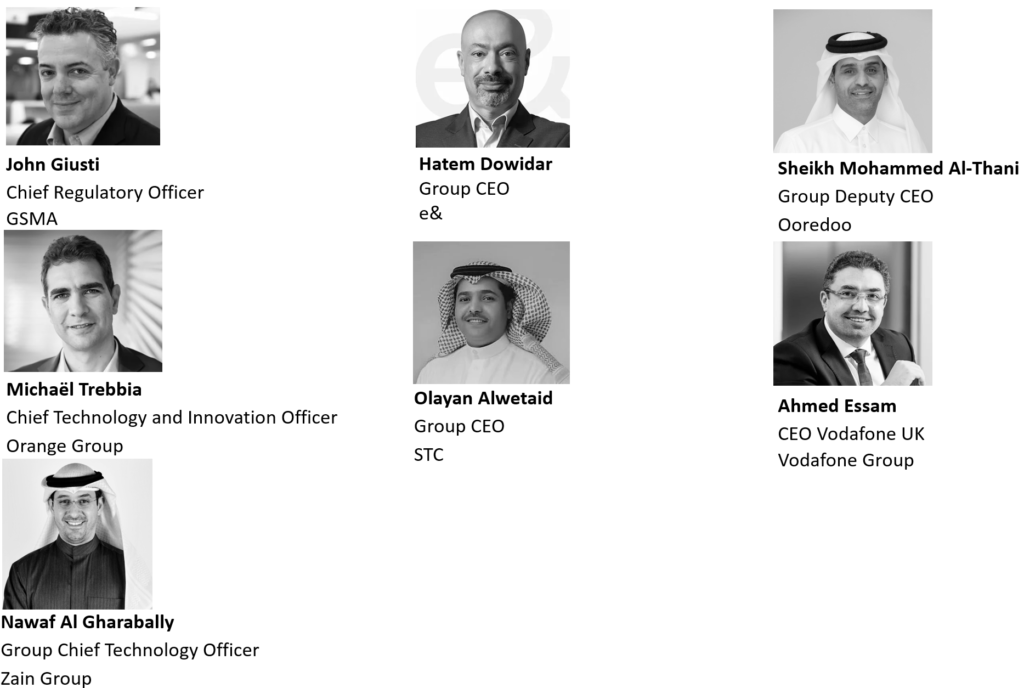Commercial 5G was born in the Arab world. Near-simultaneous launches in three Gulf countries marked the beginning of an era, in May 2018. This pioneering spirit has led to Arab countries today ranking among the fastest adopters of communications technologies. As the 5G era begins to mature in the Middle East and develop faster elsewhere in the Arab world, spectrum is required to continue this leadership.
Mobile is used by over 5 billion people worldwide every day. It creates business opportunities, connects us with loved ones, provides healthcare and education, and allows us to enjoy many of the things that make life worth living. The GSMA is made up of more than 1000 mobile operators and other businesses in the mobile ecosystem from every corner of the globe. Together, we share a vision that mobile services can be delivered to all people and industries, leaving no-one behind in the digital age.
The World Radiocommunication Conference this year (WRC-23), held under the auspices of the International Telecommunication Union (ITU), is an opportunity to support that vision and make sure that we build crucial development pillars to increase digital equality, widen harmonisation to produce economies of scale, and provide a clear roadmap to address future spectrum capacity needs. In the case of mobile, the WRC plays an important role in harmonising spectrum using, in ITU terminology, an IMT identification. This international agreement creates vast economies of scale and device diversity.
WRC-23 can be an engine to drive continued growth and ICT leadership in the Arab world, but for those of us with operations in the region, government support is required to find the spectrum we will need.
Low-band spectrum discussed at WRC-23 (470-694 MHz) will support better quality services in rural areas and improve digital equality while leaving more than enough spectrum for existing services. The final Arab Spectrum Management Group (ASMG) meeting of this WRC cycle will be held in Bahrain this September, and there is strong support for more low-band spectrum from many countries in the region. However, delivering a unified Arab position is vital before the ITU world moves to the WRC, which is held in Dubai this year.
WRC-23 can be a pathway to better quality services, delivered to more people by the most affordable networks. MNOs need the new spectrum capacity that will be considered at WRC-23 to provide consistent speeds to more people as 5G services take off. The right amount of capacity allows us to minimise the number of base stations in the network, which does not just keep costs down but also saves carbon emissions.
The Arab region made a strong start with the harmonisation of the 3.3-3.8 GHz band in 2018 and the 6 GHz band is the next spectrum needing harmonisation. Urban populations will require access to the 6 GHz band (6.425-7.125 GHz) to ensure that, as we move towards mature 5G at the end of this decade, speeds do not reduce in times of high use. Licensed 6 GHz will also play a critical role in extending capacity to deliver mobile networks with low latency and high security – networks that are important for the future agility and competitiveness of the region’s industrial and manufacturing sectors.
With the right spectrum at WRC-23, we can deliver affordable 5G across the continent and help ensure no-one is left behind in a digital age. In doing so, WRC-23 can make decisions for the benefit of billions.
To achieve this vision, we urge the countries of the region to consider the following actions at WRC-23:
- Adding a primary mobile allocation in the band 470-694 MHz, allowing those countries that wish to do so to identify the band, or parts of it, for IMT
- Identifying the band 3.3-3.8 GHz for IMT
- Identifying the 6 GHz band (6.425-7.125 GHz) for IMT
Signatories



